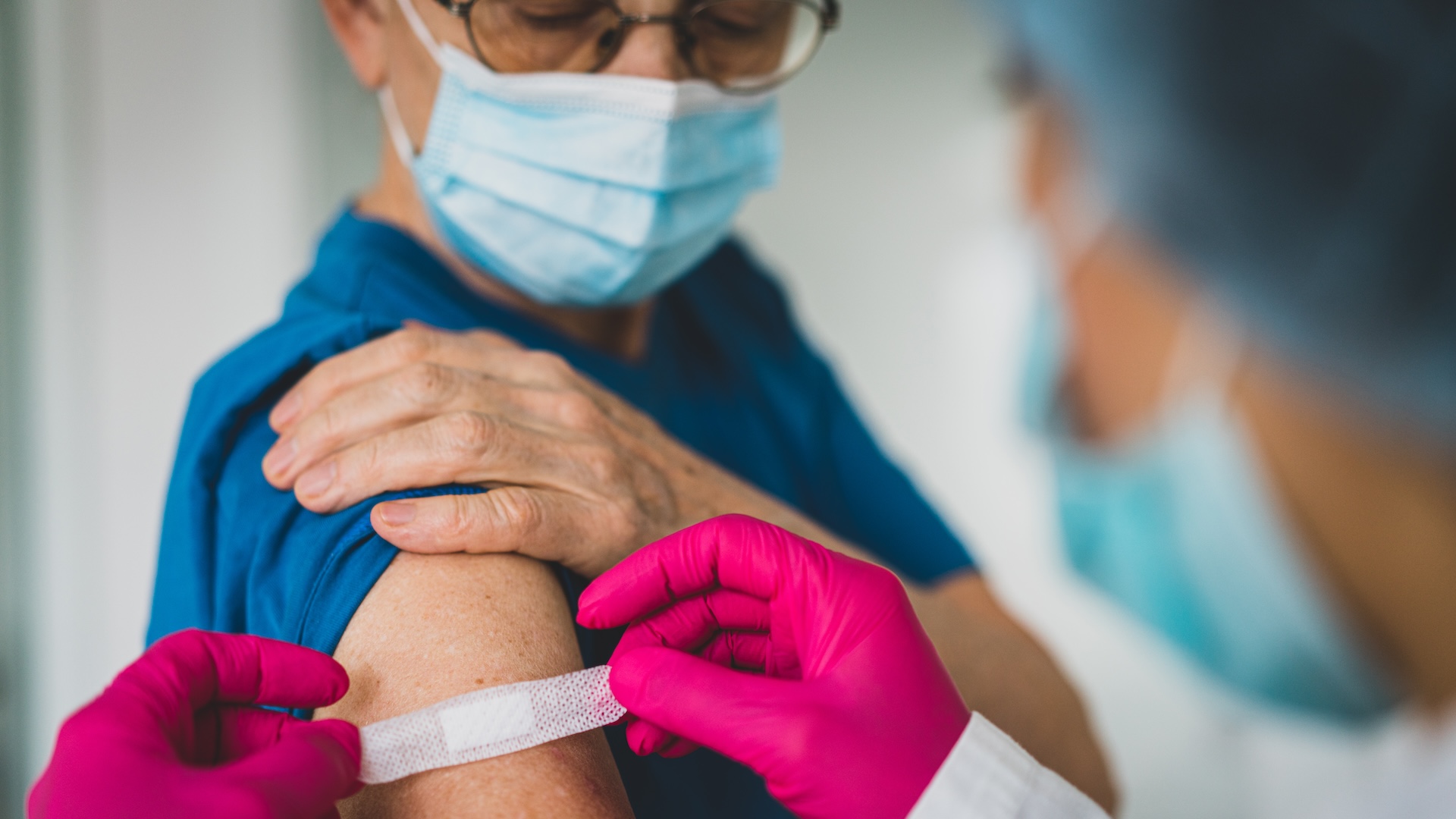
Adults 65 and older and people with weakened immune systems should get two doses of the newly updated COVID-19 vaccine, the Centers for Disease Control and Prevention (CDC) recommends.
People in these groups should seek their second dose at least six months after getting their first dose, the CDC said Wednesday (Oct. 23). This recommendation also opens the door for people with moderate to severe immunosuppression to get three doses, or even more, the agency added. Patients can speak with their medical provider about whether they could benefit from getting three or more doses.
“The recommendation acknowledges the increased risk of severe disease from COVID-19 in older adults and those who are immunocompromised,” the CDC stated. It also acknowledges that, unlike the seasonal flu, COVID-19 circulates year-round, so certain patients could benefit from getting a boost in immunity more than once a year.
“Receiving recommended 2024-2025 COVID-19 vaccines can restore and enhance protection against the virus variants currently responsible for most infections and hospitalizations in the United States,” the CDC said. “COVID-19 vaccination also reduces the chance of suffering the effects of Long COVID.”
Related: Virus that causes COVID-19 uses a secret ‘back door’ to infect the brain
Everyone 6 months and older is recommended to get at least one dose of a 2024-2025 COVID-19 vaccine. There are three vaccines available, made by Pfizer-BioNTech, Moderna, and Novavax. The first two shots use mRNA, a genetic molecule, as their base, while the Novavax vaccine contains virus proteins and a substance to rev up the immune system.
The CDC doesn’t recommend one type of vaccine over another, except to note that Novavax is only approved for people ages 12 and up, while the others can be given to children as young as 6 months. Young kids may be recommended to get one to three doses of the vaccine, depending on which brand they get this year and whether they’ve been vaccinated for COVID-19 previously. Those details are spelled out on the CDC website.
The 2024-2025 vaccines differ from prior shots in that they’ve been updated to guard against new versions of the coronavirus that have recently emerged. The Pfizer and Moderna shots target a branch of the omicron family tree called KP.2, which began gaining dominance in June. The Novavax shot was designed to target an earlier variant, called JN.1, which KP.2 overtook.
Since summer, new variants have emerged, with one called KP.3.1.1 gaining traction in August and remaining on top as of mid-October. Although the virus continues to evolve, laboratory tests suggest that all three 2024-2025 vaccines generate antibodies against a wide range of JN.1 descendents, including KP.2, KP.3 and their close relatives.
The CDC hopes that, by recommending additional doses to high-risk groups, people can be better protected from the virus year-round.
You can learn more about where to get a COVID-19 vaccine on the CDC website.
This article is for informational purposes only and is not meant to offer medical advice.
Ever wonder why some people build muscle more easily than others or why freckles come out in the sun? Send us your questions about how the human body works to community@livescience.com with the subject line “Health Desk Q,” and you may see your question answered on the website!




